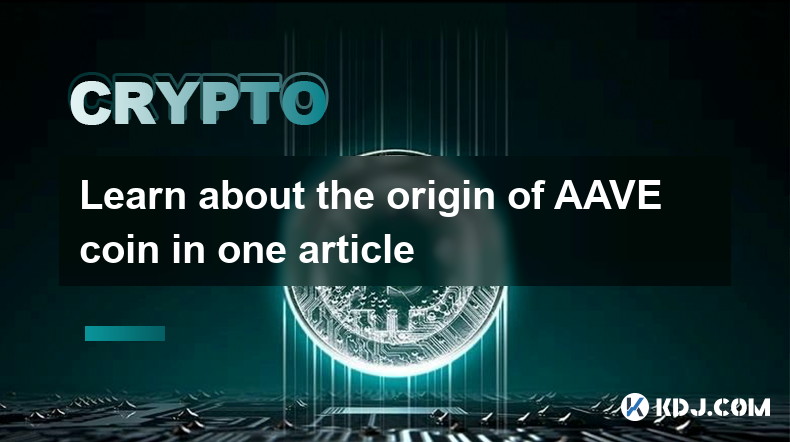-
 Bitcoin
Bitcoin $108,250.0992
0.11% -
 Ethereum
Ethereum $2,515.9404
0.03% -
 Tether USDt
Tether USDt $1.0003
0.00% -
 XRP
XRP $2.2166
-0.19% -
 BNB
BNB $656.5904
0.29% -
 Solana
Solana $147.4122
-0.58% -
 USDC
USDC $1.0000
-0.01% -
 TRON
TRON $0.2830
0.06% -
 Dogecoin
Dogecoin $0.1641
0.27% -
 Cardano
Cardano $0.5739
-0.19% -
 Hyperliquid
Hyperliquid $39.1463
-0.11% -
 Sui
Sui $2.8882
-0.02% -
 Bitcoin Cash
Bitcoin Cash $487.6428
0.31% -
 Chainlink
Chainlink $13.2097
0.07% -
 UNUS SED LEO
UNUS SED LEO $9.0308
0.10% -
 Avalanche
Avalanche $17.8608
0.13% -
 Stellar
Stellar $0.2379
-0.06% -
 Toncoin
Toncoin $2.7400
-0.39% -
 Shiba Inu
Shiba Inu $0.0...01144
-0.36% -
 Litecoin
Litecoin $87.5467
0.66% -
 Hedera
Hedera $0.1538
0.22% -
 Monero
Monero $315.5479
0.36% -
 Dai
Dai $1.0000
0.00% -
 Polkadot
Polkadot $3.3523
-0.71% -
 Ethena USDe
Ethena USDe $1.0003
0.01% -
 Bitget Token
Bitget Token $4.3960
-1.03% -
 Uniswap
Uniswap $7.2663
4.19% -
 Aave
Aave $272.8619
2.04% -
 Pepe
Pepe $0.0...09676
-0.18% -
 Pi
Pi $0.4586
-2.87%
Learn about the origin of AAVE coin in one article
Aave's origins stem from the need for a decentralized lending platform, eliminating intermediaries and fostering financial inclusion while empowering users with greater control over their assets.
Dec 27, 2024 at 08:30 am

Key Points
- Understanding the Birth of Aave
- Role of Decentralized Lending in Aave's Creation
- Aave Ecosystem's Expansion and Developments
- Factors Driving Aave's Success
- Challenges and Future of Aave
Learn about the origin of AAVE coin in one article
Understanding the Birth of Aave
Aave, initially launched as ETHLend in 2017, was conceived amidst the burgeoning decentralized finance (DeFi) ecosystem. Its founders, Stani Kulechov and Jordan Lazaro Gustave, recognized the need for a peer-to-peer lending platform that eliminates intermediaries and traditional financial constraints. The platform's vision was to empower users with greater control over their assets, fostering financial inclusion and efficiency in the crypto realm.
Role of Decentralized Lending in Aave's Creation
Prior to Aave's emergence, lending in the crypto space was largely centralized, with platforms like Celsius and BlockFi holding custody of users' assets and dictating lending terms. This centralized approach hindered accessibility, introduced counterparty risks, and often imposed stringent eligibility criteria. Aave sought to disrupt this paradigm by introducing decentralized lending, leveraging blockchain technology to establish trustless and transparent loan agreements.
Aave Ecosystem's Expansion and Developments
In 2019, ETHLend rebranded to Aave and introduced Aave Protocol, a non-custodial liquidity protocol allowing users to lend and borrow a diverse range of crypto assets. The protocol's liquidity pools enable efficient borrowing of funds at variable interest rates, determined by supply and demand dynamics. Over the years, Aave has continuously expanded its ecosystem, adding features such as flash loans, yield farming, and governance tokens.
Factors Driving Aave's Success
Aave's remarkable growth can be attributed to several key factors:
- Decentralization: Aave's non-custodial nature eliminates counterparty risks and empowers users with full control of their assets.
- Transparency: The platform's open-source code and on-chain data provide transparency and accountability to all participants.
- Flexibility: Aave's permissionless lending model allows users to lend and borrow a wide range of crypto assets, offering flexibility and choice.
- Community Governance: AAVE token holders participate in the platform's governance, ensuring that Aave's development aligns with the interests of its users.
Challenges and Future of Aave
As with any innovative technology, Aave faces certain challenges and opportunities for further development:
- Regulatory Landscape: Evolving regulatory frameworks could impact Aave's operations, requiring adaptability and compliance measures.
- Competition: The DeFi space is competitive, with new platforms emerging to challenge Aave's dominance. Innovation and differentiation will be crucial for maintaining market share.
- Market Volatility: Crypto market volatility can influence the stability of Aave's lending pools, necessitating risk management strategies.
- Future Enhancements: Aave continues to explore advancements such as cross-chain integrations, new lending models, and enhanced decentralized governance mechanisms.
FAQs
1. What is the key differentiator between Aave and traditional lending platforms?
Aave eliminates intermediaries and empowers users with control over their assets through its decentralized lending model.
2. How does the interest rate on Aave loans fluctuate?
Interest rates on Aave loans are variable and determined by the supply and demand for the borrowed asset within each liquidity pool.
3. What role do AAVE tokens play in the Aave ecosystem?
AAVE tokens represent governance rights over the Aave Protocol, allowing holders to influence platform decisions and feature developments.
4. What are the potential risks of using Aave?
Users should be aware of risks such as market volatility, smart contract vulnerabilities, and the potential impact of regulatory changes on the platform's operations.
5. What is the future outlook for Aave?
Aave is poised for continued growth as the DeFi ecosystem matures and innovative features enhance the platform's utility and accessibility. By embracing collaboration, innovation, and community engagement, Aave is well-positioned to maintain its prominence in the decentralized lending landscape.
Disclaimer:info@kdj.com
The information provided is not trading advice. kdj.com does not assume any responsibility for any investments made based on the information provided in this article. Cryptocurrencies are highly volatile and it is highly recommended that you invest with caution after thorough research!
If you believe that the content used on this website infringes your copyright, please contact us immediately (info@kdj.com) and we will delete it promptly.
- Litecoin Breakout Watch: What Traders Need to Know Now
- 2025-07-06 16:50:13
- Bitcoin, Solana, Ethereum: Decoding the Latest Buzz on the Blockchain
- 2025-07-06 16:50:13
- Widnes Resident's 50p Could Be Your Ticket to Easy Street: Rare Coin Mania!
- 2025-07-06 16:55:13
- Bitcoin, Solaris Presale, and Token Rewards: What's the Buzz?
- 2025-07-06 16:55:13
- Ethereum Under Pressure: Price Drop Amid Global Uncertainties
- 2025-07-06 17:00:13
- XRP, SEC Case, and Prosperity: A New Era for XRP Holders?
- 2025-07-06 17:10:13
Related knowledge

How to customize USDT TRC20 mining fees? Flexible adjustment tutorial
Jun 13,2025 at 01:42am
Understanding USDT TRC20 Mining FeesMining fees on the TRON (TRC20) network are essential for processing transactions. Unlike Bitcoin or Ethereum, where miners directly validate transactions, TRON uses a delegated proof-of-stake (DPoS) mechanism. However, users still need to pay bandwidth and energy fees, which are collectively referred to as 'mining fe...

USDT TRC20 transaction is stuck? Solution summary
Jun 14,2025 at 11:15pm
Understanding USDT TRC20 TransactionsWhen users mention that a USDT TRC20 transaction is stuck, they typically refer to a situation where the transfer of Tether (USDT) on the TRON blockchain has not been confirmed for an extended period. This issue may arise due to various reasons such as network congestion, insufficient transaction fees, or wallet-rela...

How to cancel USDT TRC20 unconfirmed transactions? Operation guide
Jun 13,2025 at 11:01pm
Understanding USDT TRC20 Unconfirmed TransactionsWhen dealing with USDT TRC20 transactions, it’s crucial to understand what an unconfirmed transaction means. An unconfirmed transaction is one that has been broadcasted to the blockchain network but hasn’t yet been included in a block. This typically occurs due to low transaction fees or network congestio...

How to check USDT TRC20 balance? Introduction to multiple query methods
Jun 21,2025 at 02:42am
Understanding USDT TRC20 and Its ImportanceUSDT (Tether) is one of the most widely used stablecoins in the cryptocurrency market. It exists on multiple blockchain networks, including TRC20, which operates on the Tron (TRX) network. Checking your USDT TRC20 balance accurately is crucial for users who hold or transact with this asset. Whether you're sendi...

What to do if USDT TRC20 transfers are congested? Speed up trading skills
Jun 13,2025 at 09:56am
Understanding USDT TRC20 Transfer CongestionWhen transferring USDT TRC20, users may occasionally experience delays or congestion. This typically occurs due to network overload on the TRON blockchain, which hosts the TRC20 version of Tether. Unlike the ERC20 variant (which runs on Ethereum), TRC20 transactions are generally faster and cheaper, but during...

The relationship between USDT TRC20 and TRON chain: technical background analysis
Jun 12,2025 at 01:28pm
What is USDT TRC20?USDT TRC20 refers to the Tether (USDT) token issued on the TRON blockchain using the TRC-20 standard. Unlike the more commonly known ERC-20 version of USDT (which runs on Ethereum), the TRC-20 variant leverages the TRON network's infrastructure for faster and cheaper transactions. The emergence of this version came as part of Tether’s...

How to customize USDT TRC20 mining fees? Flexible adjustment tutorial
Jun 13,2025 at 01:42am
Understanding USDT TRC20 Mining FeesMining fees on the TRON (TRC20) network are essential for processing transactions. Unlike Bitcoin or Ethereum, where miners directly validate transactions, TRON uses a delegated proof-of-stake (DPoS) mechanism. However, users still need to pay bandwidth and energy fees, which are collectively referred to as 'mining fe...

USDT TRC20 transaction is stuck? Solution summary
Jun 14,2025 at 11:15pm
Understanding USDT TRC20 TransactionsWhen users mention that a USDT TRC20 transaction is stuck, they typically refer to a situation where the transfer of Tether (USDT) on the TRON blockchain has not been confirmed for an extended period. This issue may arise due to various reasons such as network congestion, insufficient transaction fees, or wallet-rela...

How to cancel USDT TRC20 unconfirmed transactions? Operation guide
Jun 13,2025 at 11:01pm
Understanding USDT TRC20 Unconfirmed TransactionsWhen dealing with USDT TRC20 transactions, it’s crucial to understand what an unconfirmed transaction means. An unconfirmed transaction is one that has been broadcasted to the blockchain network but hasn’t yet been included in a block. This typically occurs due to low transaction fees or network congestio...

How to check USDT TRC20 balance? Introduction to multiple query methods
Jun 21,2025 at 02:42am
Understanding USDT TRC20 and Its ImportanceUSDT (Tether) is one of the most widely used stablecoins in the cryptocurrency market. It exists on multiple blockchain networks, including TRC20, which operates on the Tron (TRX) network. Checking your USDT TRC20 balance accurately is crucial for users who hold or transact with this asset. Whether you're sendi...

What to do if USDT TRC20 transfers are congested? Speed up trading skills
Jun 13,2025 at 09:56am
Understanding USDT TRC20 Transfer CongestionWhen transferring USDT TRC20, users may occasionally experience delays or congestion. This typically occurs due to network overload on the TRON blockchain, which hosts the TRC20 version of Tether. Unlike the ERC20 variant (which runs on Ethereum), TRC20 transactions are generally faster and cheaper, but during...

The relationship between USDT TRC20 and TRON chain: technical background analysis
Jun 12,2025 at 01:28pm
What is USDT TRC20?USDT TRC20 refers to the Tether (USDT) token issued on the TRON blockchain using the TRC-20 standard. Unlike the more commonly known ERC-20 version of USDT (which runs on Ethereum), the TRC-20 variant leverages the TRON network's infrastructure for faster and cheaper transactions. The emergence of this version came as part of Tether’s...
See all articles

























































































